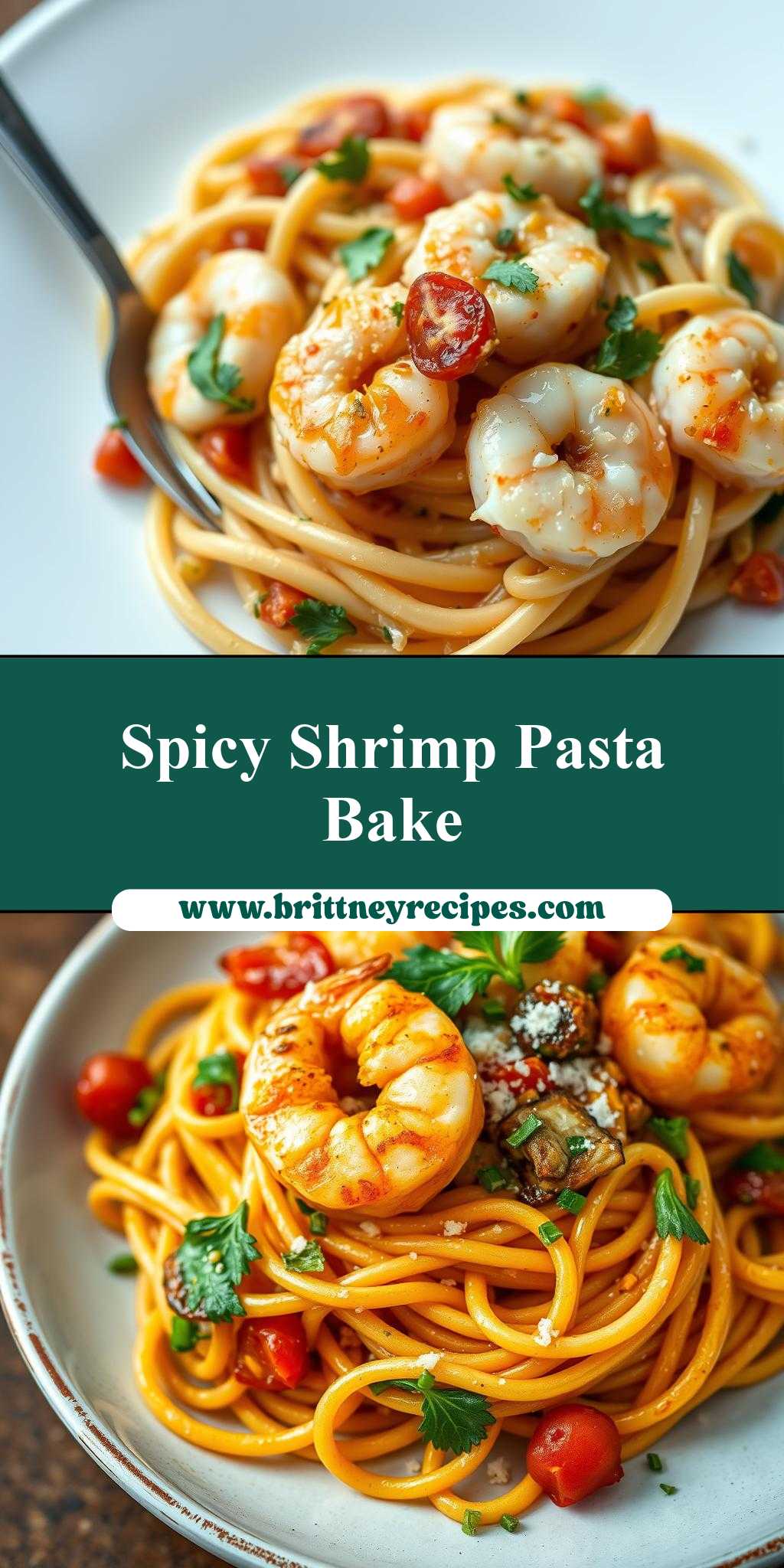What makes a perfect weeknight dinner? Spicy Cajun shrimp tossed with garlic and linguine in a quick homemade sauce is my go-to easy recipe for a flavorful family favorite, save this idea for a delicious meal to make soon
Cajun Shrimp Pasta
Introduction
Cajun Shrimp Pasta is a dish that embodies the vibrant spirit of Louisiana’s culinary heritage, blending the succulence of shrimp with the hearty warmth of pasta, all wrapped in a flavorful Cajun spice blanket. This recipe is a testament to the magic that happens when everyday ingredients are combined with a dash of creativity and a pinch of love. It’s not just a meal; it’s an experience that will transport your taste buds to the bustling streets of New Orleans. The best part? It’s incredibly easy to make, requiring minimal effort for a dish that’s sure to impress both family and friends. Whether you’re a seasoned chef or a beginner in the kitchen, this Cajun Shrimp Pasta recipe is your ticket to a flavorful adventure that will leave everyone craving for more.
Why This Works
- Flavor balance and ingredient accessibility: The beauty of this dish lies in its balance of spices, the sweetness of the shrimp, and the earthiness of the pasta, all of which are easily found in most supermarkets.
- Ease of preparation: Despite its rich flavor profile, the preparation is straightforward and quick, making it perfect for a weeknight dinner or a special occasion.
- Impressive results with minimal effort: The combination of Cajun seasoning, garlic, and the slight char from sautéing creates a depth of flavor that belies the simplicity of the recipe, ensuring that you’ll receive compliments without slaving away in the kitchen.
Key Ingredients
The foundation of a great Cajun Shrimp Pasta lies in its ingredients. You’ll need:
– 1 pound of large shrimp, peeled and deveined. Fresh or frozen, whichever is available.
– 1 cup of pasta of your choice, though penne or linguine works particularly well.
– 2 tablespoons of olive oil for sautéing.
– 1 large onion, diced, and 3 cloves of garlic, minced, for added depth of flavor.
– 1 large bell pepper, diced, which can be any color but red adds a nice sweetness.
– 2 teaspoons of Cajun seasoning, which is the backbone of the dish’s flavor.
– 1 can of diced tomatoes for moisture and a burst of juicy flavor.
– Salt and pepper, to taste, because every dish needs a bit of personal touch.
– Fresh parsley, chopped, for garnish, adding a pop of color and freshness.
– Grated Parmesan cheese, for serving, because everything is better with cheese.
For substitutions, consider using chicken if shrimp isn’t available, or swapping out the bell pepper for another crunchy vegetable like zucchini.
Instructions
- Step 1: Begin by preparing your ingredients. Chop the onion, mince the garlic, and dice the bell pepper. Also, boil your pasta according to the package instructions until it’s al dente, then set it aside.
- Step 2: In a large skillet, heat the olive oil over medium-high heat. Add the diced onion and sauté until it’s translucent, then add the minced garlic and cook for another minute, ensuring not to burn the garlic.
- Step 3: Add the diced bell pepper to the skillet and continue to cook until the vegetables are tender. Then, add the shrimp and sprinkle with Cajun seasoning. Cook the shrimp until they’re pink and fully cooked, about 2-3 minutes per side. Remove the shrimp from the skillet and set them aside with the pasta.
- Step 4: In the same skillet, add the can of diced tomatoes and stir to combine with the remaining juices and spice. Let it simmer for a few minutes until the sauce has thickened slightly. Then, add the cooked pasta and shrimp back into the skillet, tossing everything together to combine. Season with salt and pepper to taste. Serve hot, garnished with chopped parsley and topped with grated Parmesan cheese.
Handy Tips
- Always have your ingredients ready before starting to cook, as this recipe moves quickly once you begin.
- Don’t overcook the shrimp; it should be opaque and pink, but still juicy.
- For an extra kick, add some diced jalapeños or red pepper flakes to the skillet with the onions.
- Consider using leftover vegetables or proteins to make the dish more economical and reduce waste.
Heat Control
Heat control is crucial in this recipe, especially when cooking the shrimp. Ideally, you want to cook over medium-high heat to get a nice sear on the shrimp, but be ready to adjust the heat down to medium or low to prevent burning the garlic or overcooking the shrimp. The key is to cook the shrimp until they’re just done, as they will continue to cook a bit after being removed from the heat. Look for them to turn pink and opaque, and use a thermometer if you’re unsure – they should reach an internal temperature of 145°F (63°C).
Crunch Factor
The crunch factor in this dish comes from the perfectly cooked vegetables and the slight crisp on the shrimp from searing. To achieve this, make sure not to overcook the bell pepper and onion, as they should retain some of their crunch. For the shrimp, a quick sear in the hot skillet will provide the necessary texture contrast to the soft pasta and juicy tomatoes.
Pro Kitchen Tricks
- Use a cast-iron skillet if you have one, as it retains heat beautifully and can give your shrimp a nice crust.
- Don’t overcrowd the skillet when cooking the shrimp. Cook them in batches if necessary, to ensure they have enough room to cook evenly.
- For easier cleanup, line your counters with parchment paper or a silicone mat before chopping ingredients.
- Invest in a good Cajun seasoning blend, as the quality can greatly affect the flavor of your dish.
Storage Tips
- Leftovers can be stored in an airtight container in the refrigerator for up to 3 days. Reheat gently over low heat, adding a bit of water if the sauce has thickened too much.
- While you can freeze the dish, it’s best fresh. If you must freeze, do so before adding the pasta, and then cook the pasta fresh when you’re ready to serve.
- Use glass containers for storing, as they retain flavors and aromas better than plastic.
Gift Packaging Ideas
If you’re considering gifting this dish, perhaps for a potluck or as a meal for a friend in need, consider packaging it in a decorative microwave-safe container. Add a sprinkle of parsley on top and a wedge of lemon on the side for a pop of color. You could also include a small jar of homemade Cajun seasoning or a baguette for a complete meal. Wrap the container in a tea towel or a piece of festive cloth, and tie with a ribbon for a personal touch.
Flavor Variations
- Different spices: Experiment with various seasoning blends, like Old Bay for a more seafood-oriented flavor or Italian seasoning for a Mediterranean twist.
- Creative toppings: Add some diced avocado for creaminess, sliced olives for saltiness, or chopped fresh basil for brightness.
- Ingredient swaps: Use chicken or sausage for a heartier dish, or add some roasted vegetables like zucchini or mushrooms for added depth.
Troubleshooting
- Texture problems: If your shrimp are tough, they might have been overcooked. Try cooking them for less time or at a lower heat. For mushy pasta, check your cooking time and aim for al dente.
- Ingredient replacements: If you can’t find Cajun seasoning, make your own blend with paprika, garlic powder, onion powder, and cayenne pepper.
- Over/undercooking signs: Shrimp will turn pink and opaque when cooked. Pasta should have a slight bite (al dente). If in doubt, consult a cooking thermometer for the shrimp.
FAQs
- Can I freeze it? Yes, but it’s best to freeze the components separately (shrimp, sauce, pasta) for the best results upon reheating.
- Is it gluten-free? This depends on the pasta used. Choose a gluten-free pasta option to make the dish gluten-free.
- Can I double the recipe? Absolutely, just keep an eye on cooking times and adjust as necessary, especially when cooking the shrimp in batches.
Conclusion
Cajun Shrimp Pasta is more than just a recipe; it’s an invitation to explore the rich flavors of Cajun cuisine in the comfort of your own home. With its accessible ingredients, straightforward preparation, and impressive results, it’s a dish that’s sure to become a staple in your culinary repertoire. Don’t be afraid to experiment and make it your own, whether that’s through different spices, toppings, or ingredient swaps. The beauty of cooking lies in its subjectivity and the joy of sharing meals with others. So, go ahead, give this recipe a try, and let the vibrant spirit of Cajun cuisine bring warmth and delight to your table.

